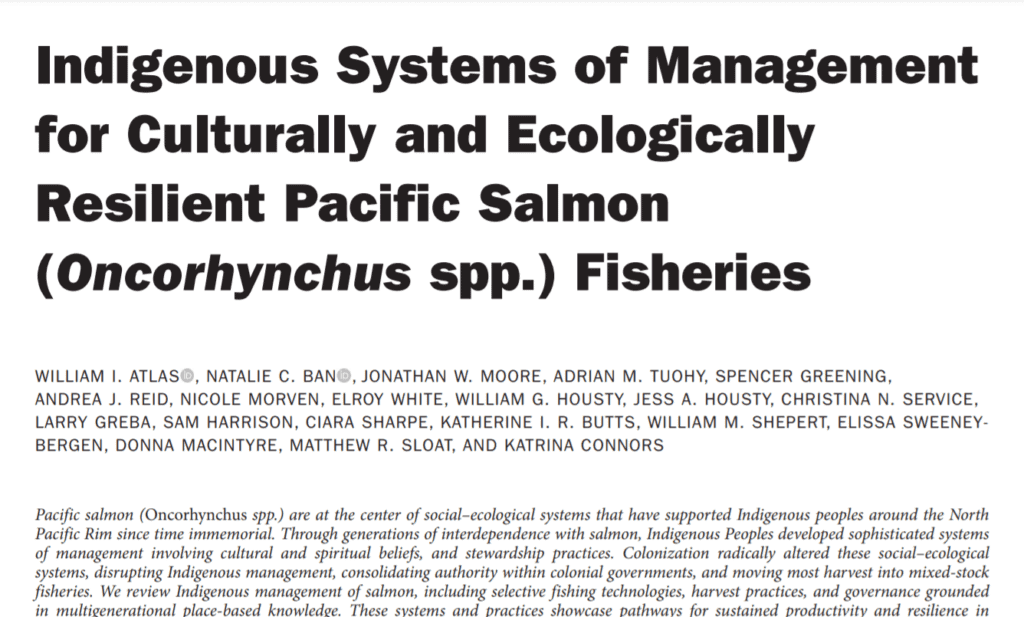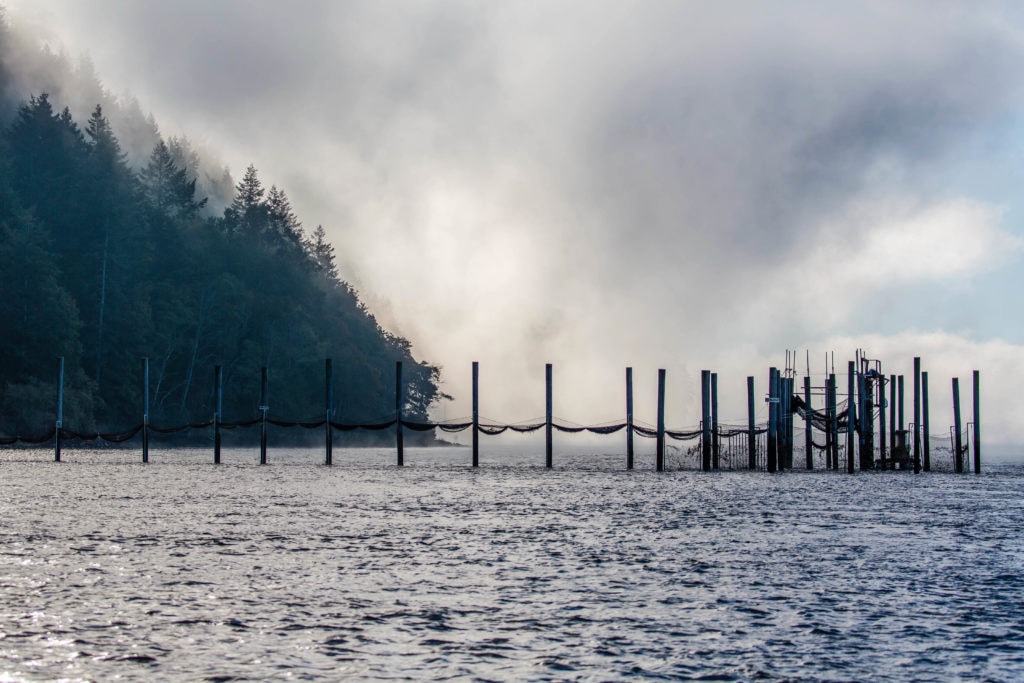A publication recently released in BioScience suggests that a return to historical Indigenous fishing practices and systems of salmon management may be key to revitalizing struggling Pacific Salmon fisheries across the North Pacific (Atlas et al. 2020).

The article, titled Indigenous Systems of Management for Culturally and Ecologically Resilient Pacific Salmon (Oncorhynchus spp.) Fisheries, is authored by a collection of accomplished Indigenous leaders and fisheries scientists from the United States and Canada. Wild Fish Conservancy (WFC) is proud to announce its own Adrian Tuohy serves as one of the paper’s co-authors.
In the paper, the authors document how Indigenous communities of the North Pacific sustainably harvested salmon for thousands of years by fishing in or near rivers with low-impact selective fishing tools like fish traps, weirs, wheels, reef nets, and dip nets. After the arrival of European settlers, traditional Indigenous fisheries and governance systems were suppressed, giving way to the mostly unsustainable mixed-stock commercial fishing practices of today that commonly occur in the ocean with non-selective tools.
“As they’re currently built, mixed-stock salmon fisheries are undermining the biodiversity needed for Pacific salmon to thrive,” says Dr. Atlas, lead author of the publication and Scientist with the Portland-based Wild Salmon Center. “Luckily, we have hundreds of examples, going back thousands of years, of better ways to fish. These techniques can deliver better results for all communities.”

The publication reviews historical methods of Indigenous salmon fishing and management, exploring the benefits of terminal fisheries and selective fishing tools able to release bycatch (nontarget species) unharmed. By targeting salmon runs in-river—rather than in the ocean, where both healthy and threatened stocks intermingle—Indigenous people harvested individual, known salmon runs as the fish made their homeward migration to natal rivers. Furthermore, Indigenous groups used low-impact selective fishing tools that support selective targeting of specific salmon runs, similar in concept to the fish trap researched in the lower Columbia River by WFC which enables bycatch of threatened and endangered fish to be safely released with nearly 100% survival rates (Tuohy et al. 2020).

The authors of the publication propose reforming status quo management practices that have failed to rebuild, or sustainably manage, struggling wild Pacific Salmon populations. According to the authors, restoring governance, place-based management systems, and methods of in-river selective harvest grounded in Indigenous knowledge can help revitalize Pacific Salmon fisheries and more equitable fishing opportunities for Indigenous and non-Indigenous coastal fishing communities alike across the North Pacific.
“Conventional harvest and hatchery management have mostly failed to maintain or restore wild salmon and steelhead south of the Aleutians,” says co-author Adrian Tuohy, a Biologist with WFC. “By returning to place-based salmon management systems, selective gears, and terminal in-river salmon fisheries historically embraced by Indigenous communities, we can address many of the primary limiting factors to recovery of wild salmon and steelhead while benefiting coastal fishing communities across the region.”
Click here to read the new publication by Atlas et al. (2020).
For additional information on the need for place-based salmon management, check out a recent article in the journal of Fisheries by WFC’s Dr. Nick Gayeski et al. (2018): The failure of wild salmon management: need for a place-based conceptual foundation.
Join our mailing list to recieve important updates on our work, the latest wild fish news, & opportunities to take action to support wild fish.
This site is protected by reCAPTCHA and the Google Privacy Policy and Terms of Service apply.
Wild Fish Conservancy is recognized as a 501(c)3 non-profit by the IRS